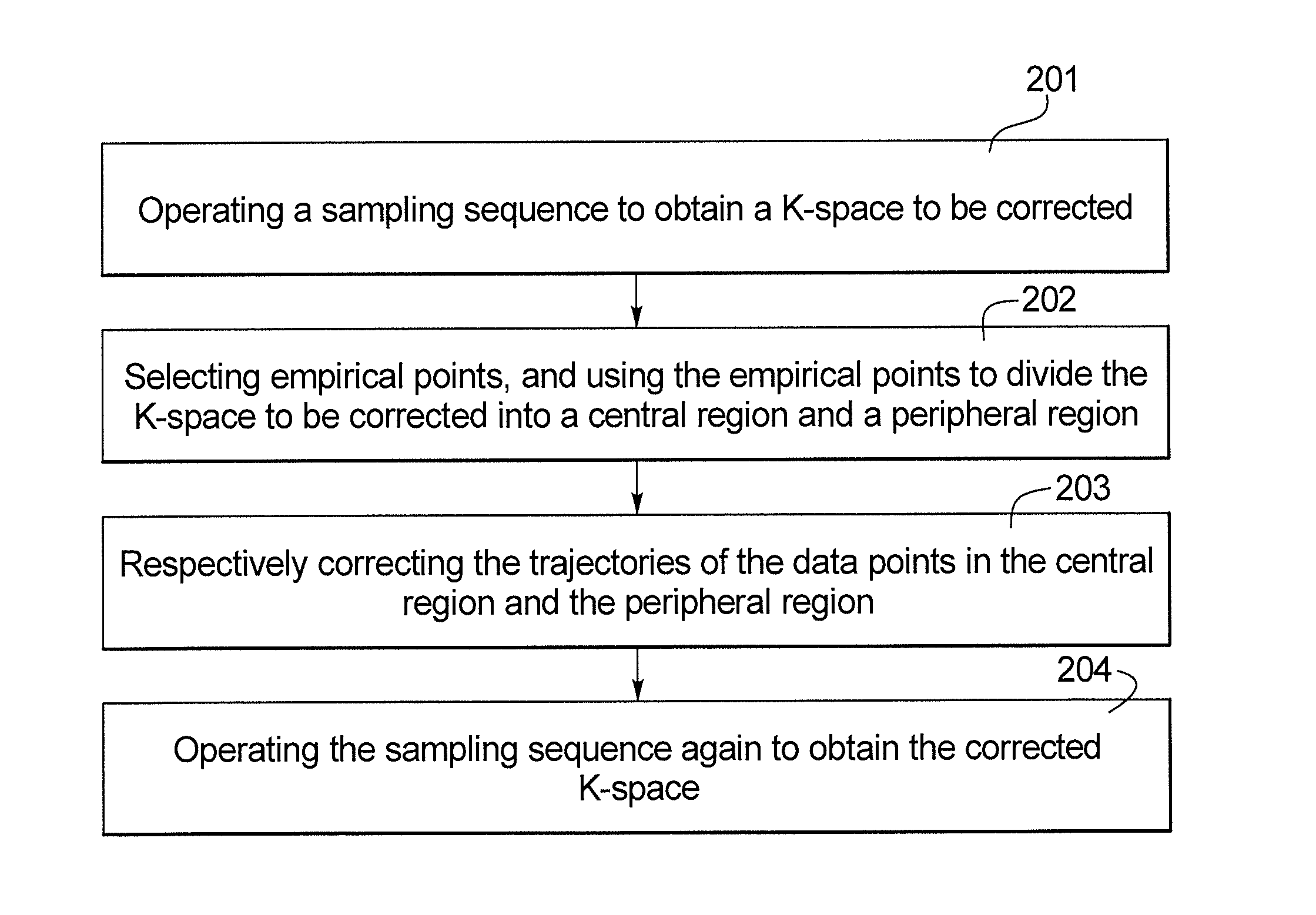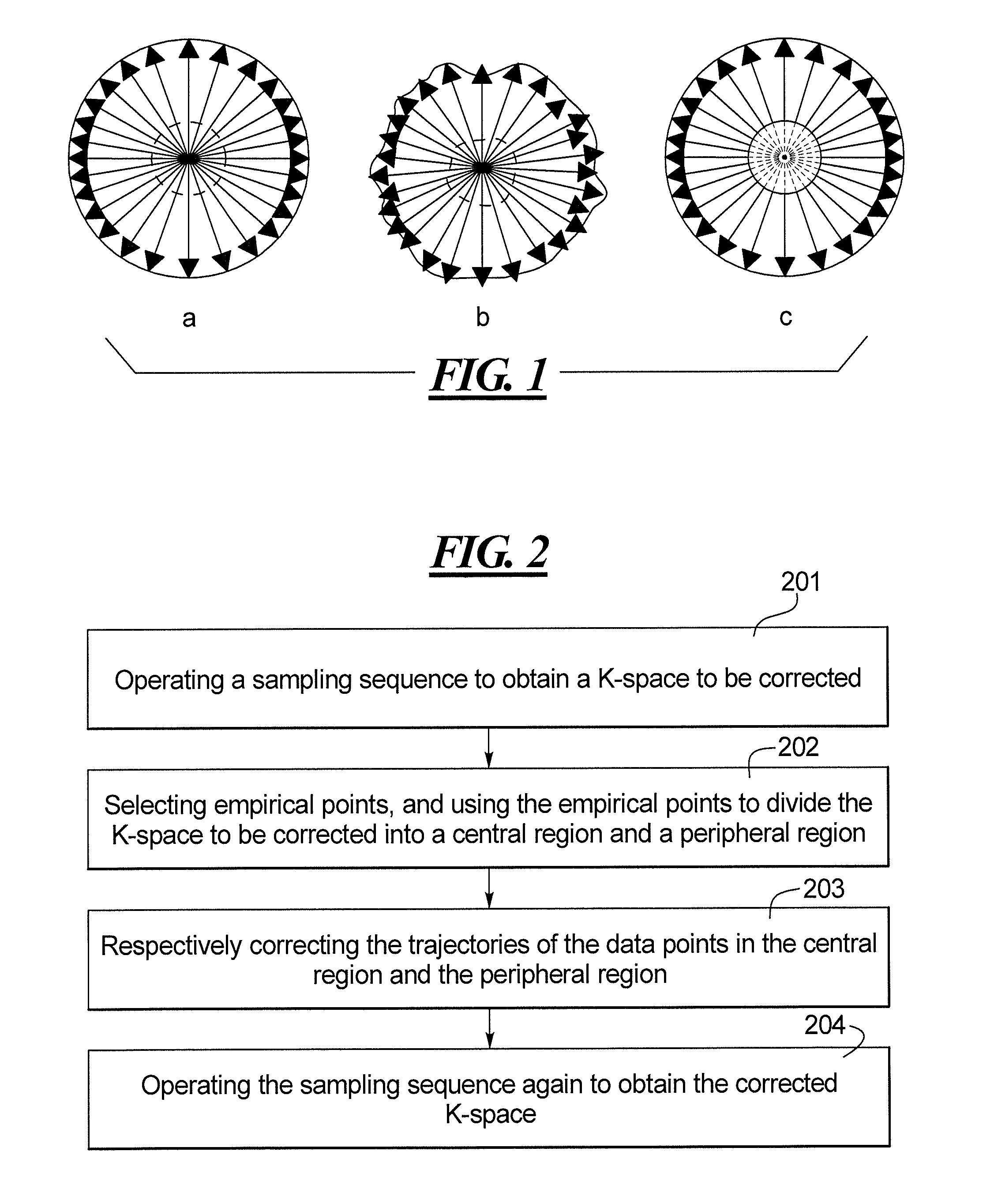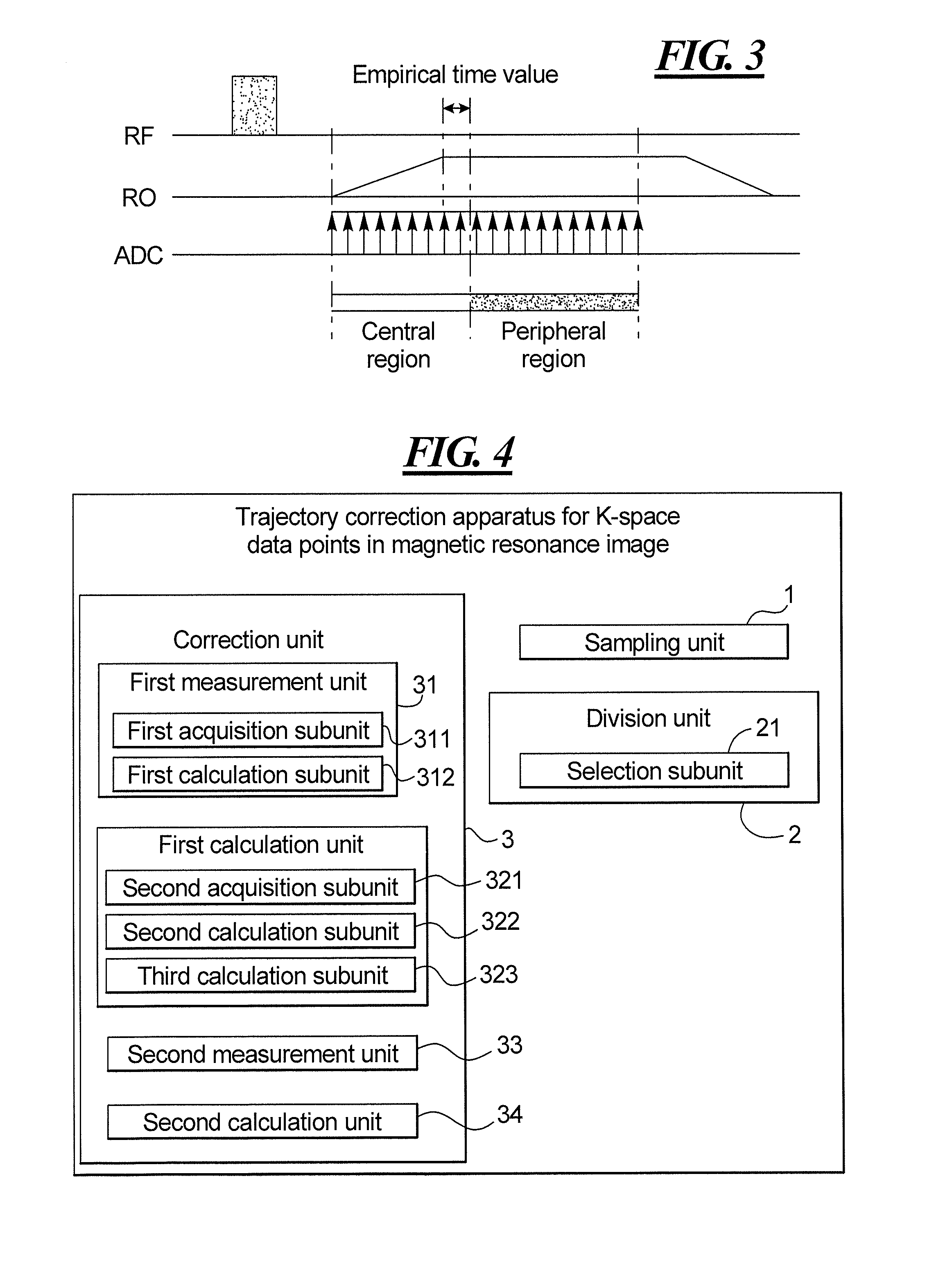Trajectory correction method and apparatus for k-space data in magnetic resonance imaging
a magnetic resonance imaging and trajectory correction technology, applied in the field of magnetic resonance imaging, can solve the problems of reducing the quality of the reconstructed mr image, introducing image artifacts, and shifting the data points in k-space, so as to reduce the calculation amount for trajectory correction and the complexity of calculation, reduce the accumulated errors, and increase the stability of the correction algorithm.
- Summary
- Abstract
- Description
- Claims
- Application Information
AI Technical Summary
Benefits of technology
Problems solved by technology
Method used
Image
Examples
Embodiment Construction
[0025]Shown in FIG. 1a is a schematic diagram of ideal k-space obtained by acquiring MR data to fill k-space according to a non-Cartesian sequence, e.g. a radial sequence. However, in actual operations, due to being affected by the electromagnetic effect resulting from eddy current, gradient changes will be prevented in each readout gradient (RO) direction, and therefore the filling (data entry) positions of the data points located in the central region (i.e. the region with a gradually increasing gradient magnitude) in k-space will be disordered; while in the peripheral region (i.e. the region of which the gradient magnitude is a constant) of k-space, even though the filling positions of the data points located in this region are not disordered. Due to being affected by the accumulated errors within the central region, the filling positions of the data points in the peripheral region will also shift, and therefore, the actually obtained k-space is shown as in FIG. 1b. The purpose o...
PUM
 Login to View More
Login to View More Abstract
Description
Claims
Application Information
 Login to View More
Login to View More - R&D
- Intellectual Property
- Life Sciences
- Materials
- Tech Scout
- Unparalleled Data Quality
- Higher Quality Content
- 60% Fewer Hallucinations
Browse by: Latest US Patents, China's latest patents, Technical Efficacy Thesaurus, Application Domain, Technology Topic, Popular Technical Reports.
© 2025 PatSnap. All rights reserved.Legal|Privacy policy|Modern Slavery Act Transparency Statement|Sitemap|About US| Contact US: help@patsnap.com



